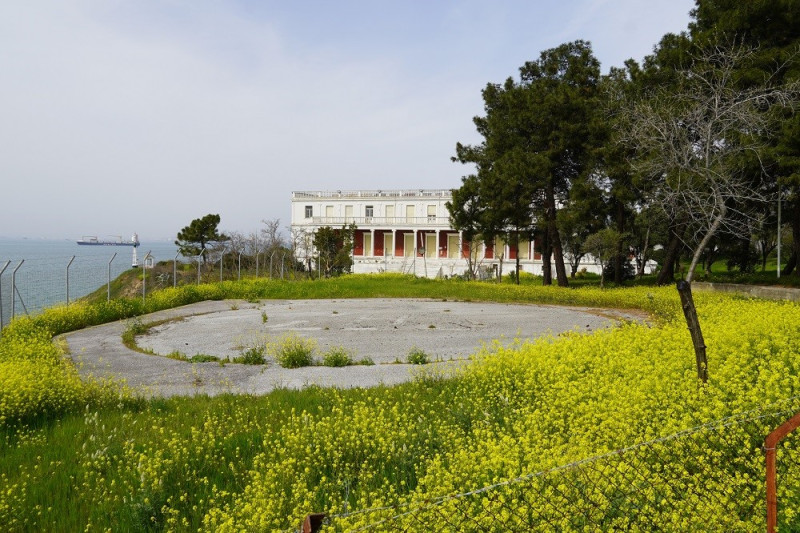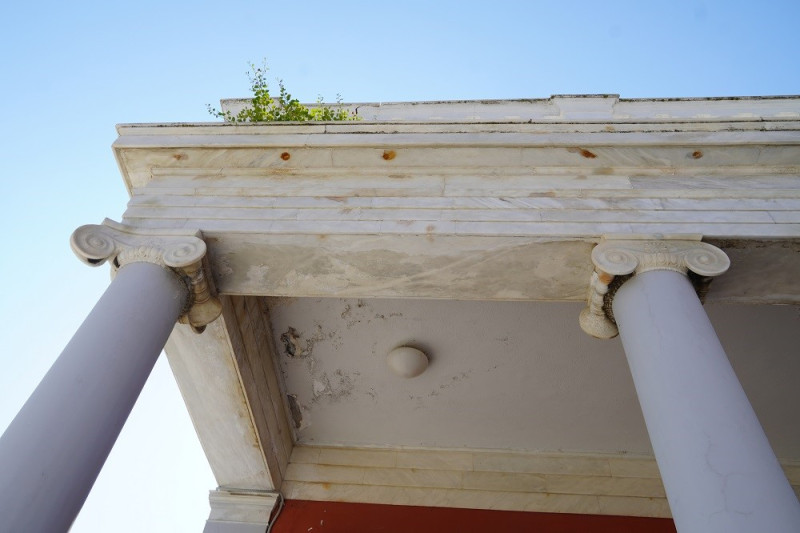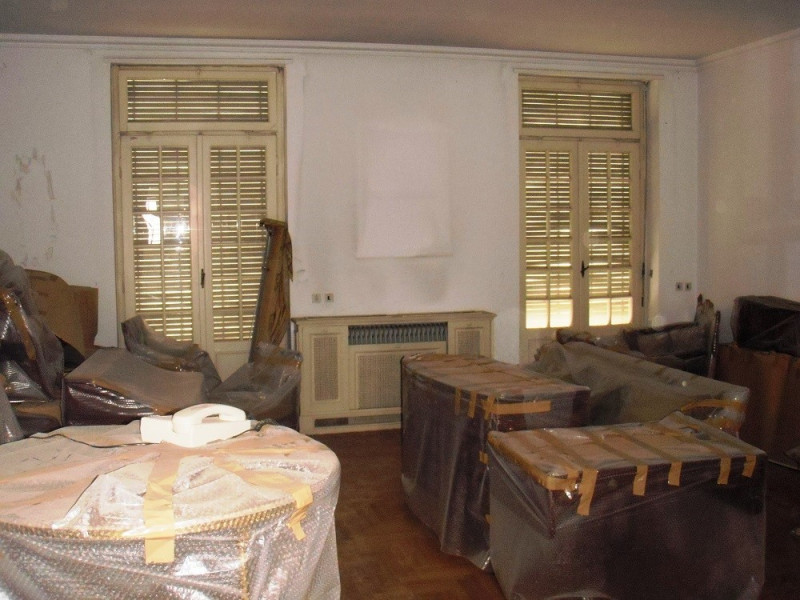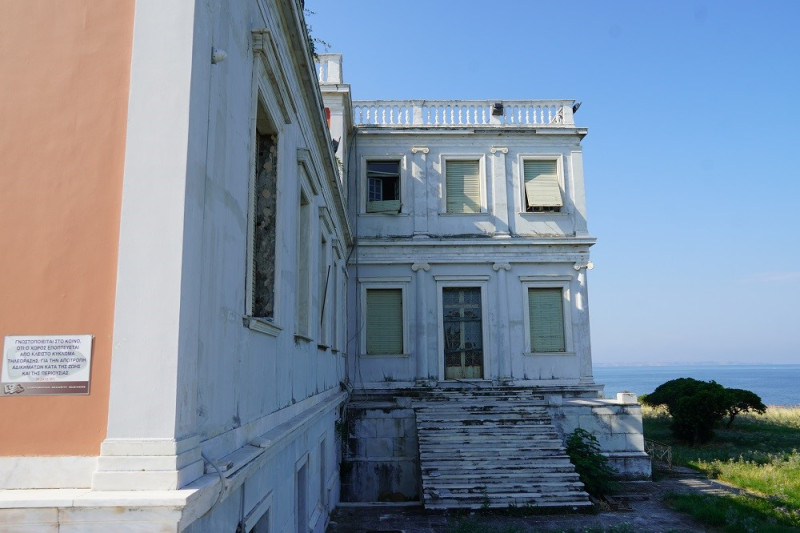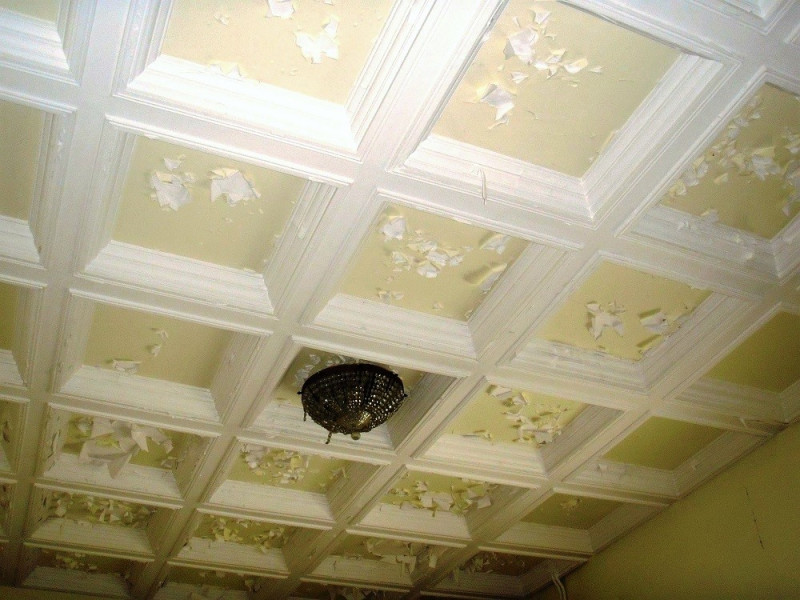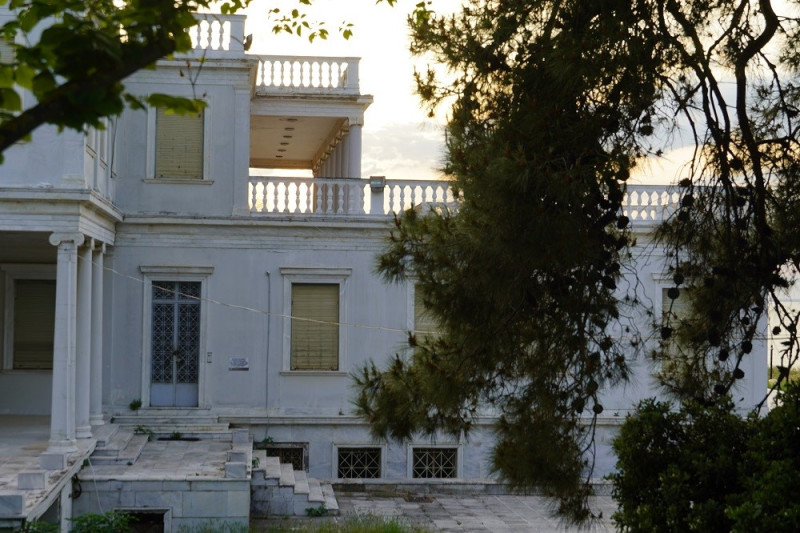The two-storey emblematic neoclassical building was built in the late 1950s, granted as a holiday home to the royal family and was the residence of Konstantinos Karamanlis (as prime minister and president of the Republic)
A palace, a neoclassical jewel that now belongs to the TAIPED (Public Private Property Development Fund) but… is lying in its “dowry” Thessaloniki.
The mansion building was built at the end of the 1950s on an area of approximately 15 acres at Mikro Embolos, according to the plans of the architect I. Christopoulos, probably destined to become a Government building.
In 1963 it was given to the royal family to stay in when visiting Thessaloniki, but the royal family only stayed in its premises for one night!
The two-story building has an area of 1,200 sq.m. while it also has a basement where there are warehouses, kitchens and a laundry room. It is a neoclassical building on, perhaps, the most beautiful elevation of the coastal front of Thessaloniki.
In its front yard there is a small church of Saints Constantine and Helen, while in the back there is a helipad.
Next to it are the building carcasses of the former Kodra camp. Since 2001, during the ministry of Giorgos Paschalidis, “Palataki” was declared “Preserved”.
His story
According to testimonies, the royal family, when visiting Thessaloniki, preferred to stay at the luxurious and famous beach hotel of the time “Mediterranean Palas”. In 1968 the use of the property returned to the Ministry of Northern Greece to meet the needs of the respective minister.
It is possible, therefore, that the two-story emblematic neoclassical building, which has been classified as “preservable” since 2001, did not develop into a royal vacation home, but it was used by several other figures of the political life of the place. It was the residence of Konstantinos Karamanlis (as Prime Minister and President of the Republic) but also the residence of some of the Ministers of Northern Greece and then Macedonia Thrace who came from outside Thessaloniki. Several foreign political personalities (presidents of the republic, prime ministers and kings) moved in its halls and slept in its rooms.
Its last tenant was the Minister of Macedonia Thrace from Kozani, Nikos Tsiartsionis. He lived there in the period 2004-2006. When his successor, Giorgos Kalantzis, took over, the “Palataki” or “Government” as it is otherwise known, was closed in order to be renovated, which was never done. Perhaps the subsequent financial crisis that hit the country played a role in this.
Mobility to his rescue
Since then the locked “Palataki” has been abandoned to the ravages of time and the weather. The damage caused in these 16 years of its abandonment is evident both on the exterior and interior of the building.
This is the reason why a Citizens Initiative under the name “SAVE THE PALACE” has been active for more than two years with the aim of informing and awakening the local (and not only) forces in order to save the “Palace”.
Initially to be saved as a building and as an asset and historical part of the city and in a second phase to decide its use or uses. Ideas regarding the latter are many and interesting. Many of them “see” the building as a multi-cultural venue that can host exhibitions, conferences, concerts, lectures, receptions and even a maritime museum that is missing from Thessaloniki.
During the years that the building remains closed, only its garden is utilized hosting receptions, concerts and musical parties. In May 2016, the wedding reception of Giorgos Savvidis, eldest son of the major shareholder of PAOK, Ivan Savvidis, took place there.
In the meantime, much was heard and written about the looting that took place in the movable property of the palace without, however, any clear refutation or confirmation of the information. What was reported a few years ago through the mouth of the then undersecretary of the interior responsible for Macedonian Thrace affairs, Theodoros Karaoglou, is that paintings, carpets and household items of the palace are kept in the premises of the Ministry of Macedonia Thrace.
Nikos Tsiartsionis – The last tenant
“I take it for granted that the building should be saved and preserved as long as a story has been recorded around it. I believe that it can be a useful cradle in the region, serving some social project,” noted former minister Nikos Tsiartsionis, speaking to APE-MPE.
Besides, as he said, there were two main reasons why he chose to stay in “Palataki” at the time he assumed the duties of Minister of Macedonia Thrace (2004-2006). “One was to avoid burdening the State with the costs of renting another house in the city and its 24-hour security (the palace had one anyway), and the second was because I believed that a building that is lived in is kept in better condition from an uninhabited”.
Describing the situation he found when he first got to the building, he says that when he turned on the taps, brown water was running, the shutters were rotten from the humidity, as were the curtains and some paintings. “As long as I stayed there the situation improved”, commented Mr. Tsiartsionis.
“What’s it like to live in a building like that, in a little palace?” we asked the former minister and his tenant. “It’s a big compromise. You are a stranger, alone, in a huge building…,” he replied.
The beautiful memories he kept from his stay in “Palataki” include, as he said, “the various events that were organized there to prepare for Thessaloniki’s bid to host the EXPO 2008 World Exhibition”.
Concluding our discussion, we asked Mr. Tsiartsioni two more questions:
1st. If leaving the palace he handed over the keys and more precisely if he had ever acquired keys to the palace for his personal use? He’s smiling! “No I didn’t have keys… I didn’t have to!. There were always some people there, the security people and the staff working in the building…” he replies.
2nd. If he slept in the same room as the former king or Konstantinos Karamanlis as president of the Republic? The answer was: “No, I had another room. That room was always laid out and ready, like some others, for the possibility of hosting a high-ranking person.”
Citizens’ Initiative “SAVE THE PALACE”
In the last two years, the number of citizens who have come together with the goal set by the Citizens’ Initiative “SAVE THE PALACE” has been increasing. The members of the “Initiative” have exceeded 600, the president of the retired judicial officers of Thessaloniki, Nikos Karakostas, one of the initiators of the initiative and the administrators of its website on Facebook (https://www.facebook.com) tells APE-MBE /groups/4596818807001516)
“We have no involvement with parties and we do not accept any patronage from them,” says Mr. Karakostas speaking to APE-MPE and emphasizes: “What interests us in the first stage is the political will to save it, which means to immediately carry out some restoration work on the damage to the building and the other infrastructures and in a second stage to determine its use”. We firmly believe that Palataki can become a great cultural space in which other needs of the city can be served at the same time. We are glad that lately there is movement around the issue. For example, the interest of the Municipal Authority of Kalamaria has intensified, while the ND MEP, Maria Spyrakis, has expressed interest in the matter and asked to be informed by us. The parliamentarian of Thessaloniki of the ND, Stratos Simopoulos, also shows significant mobility to push and utilize the “Palataki”. We even see agencies showing more interest these days. For us, it would be important to move to the next stage, that of the release of the property from TAIPED and with legislative regulation to be utilized for the benefit of the place and the citizens”.
RES-EMP
Read the News today and get the latest news.
Follow Skai.gr on Google News and be the first to know all the news.
I am Terrance Carlson, author at News Bulletin 247. I mostly cover technology news and I have been working in this field for a long time. I have a lot of experience and I am highly knowledgeable in this area. I am a very reliable source of information and I always make sure to provide accurate news to my readers.


